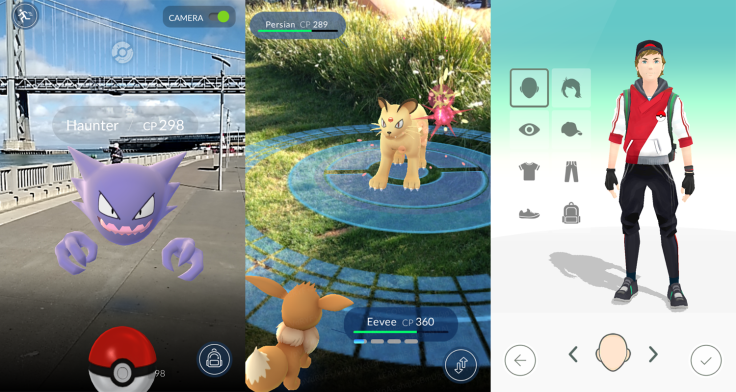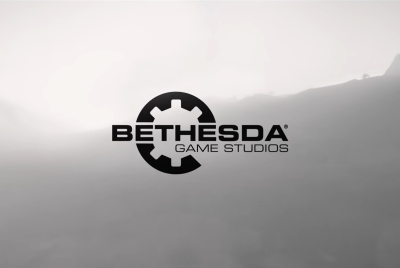Pokemon Go preview: Catch, battle and train Pokemon in a game like no other in Nintendo series
We get hands-on with Niantic and Nintendo's highly anticipated free-to-play game ahead of its July release.

Since the day of its announcement, Pokémon Go has been one of the most anticipated games in recent times. Developed by Niantic Labs, in partnership with Nintendo and The Pokémon Company, Go is a mobile game that brings the Pokémon experience to the real world – a proposition as likely to fail as it is to succeed.
The concept clearly appeals to a lot of people (the announcement trailer went viral, amassing 25.5m views to date), but making that concept work in a free-to-play mobile game was always going to be a challenge. Using real-world location data to populate the planet with Pokémon is the easy part; to then make a game around that which both works and fits with audience expectations of the series – that's where it gets tricky.
IBTimes UK was granted a few days of early access ahead of the apps unspecified release at some point in July 2016. We were impressed, but there were still many elements hard to get a grasp of without the game being widely available.
As with Miitomo – Nintendo's first mobile game, developed by DeNA – Pokémon Go is a very professional product. Free-to-play games are known for appearing cheap, but this looks like a premium game. The character models – both the player's customisable human trainer and the Pokémon themselves – look pristine, and as good, if not better, than their equivalents in the Nintendo 3DS games.
Upon starting Go, the player customises their character and enters the world. Their avatar walks through a simple map depicting the roads, alleyways, parks, rivers and other open spaces of the real world and, as is tradition, the player gets to choose a starter Pokémon. Charmander, Squirtle and Bulbasaur appear around the player; tap one and you'll enter the capture phase.
This makes up the bulk of Pokémon Go's base-level play. Players are informed when a Pokémon is nearby, with both a distance marker and a rustle of grass on the map. You can go investigate, but other times they'll just spring from nowhere, causing your device to vibrate. Once in battle, the Pokémon appears either in the real world (the app uses your camera) or against a simple background (there's an option to switch this on or off).
There's no traditional battle when these encounters occur. The player doesn't put forward their own Pokémon to weaken the other, they just launch Pokéball after Pokéball until the beast is captured or runs away. This is done with the touchscreen. Press and hold on the Pokéball and a circle will grow smaller on the Pokémon. The smaller that is when you throw the Pokéball (and you've got to hit the creature, too), the better chance you have of capturing it.
Pokémon don't have traditional levels, but combat points (CP), and the higher that is the more difficult they'll be to capture. For those, you'll need Great Balls and Ultra Balls, which are collected as you reach a higher level through accumulating experience from catching, training and battling Pokémon.
These Pokéballs and other items (Revives, Potions, Eggs) are collected from markers that litter the world (the blue ones in the screenshot below). To access these they need to be within a certain radius of the player, whose character emits a purple radius as an indicator. Once they're near enough you can tap them to see what real world location they represent, and then swipe up to release the goodies – which float around the icon in bubbles to be popped with a tap.
The depth of Go is in the Gym system. These gyms are fairly plentiful in the game world – the two near where I live were positioned at a local pub and a train station – and once the player is asked to select one three teams to join (Blue, Red and Yellow); this is a 'one and done' decision. Once you enter an empty gym the player is able to place one of their Pokémon there. This select beastie can then fight to protect the gym from other teams or are used to train against with the player's remaining Pokémon. This creates a smart balance, as placing your most powerful Pokémon here would be good for helping defend it but bad for your own training purposes.
This is where I got a taste for battles. The basics are simple: you attack by tapping and the player can swipe to dodge attacks in a circle around the opponent. Players are also able to switch Pokémon at any time to help whittle down a foe's health or save the Pokémon fighting from fainting. As is tradition, players need a team of six Pokémon for battles – but this doesn't apply to the training aspect of Gyms – which are one on one battles.
The real battling aspect of these gyms occurs when players fight for or defend a Gym which their team controls. This will form the crutch of the game and will be crucial to its longevity. Given the tiny pool of players playing Pokémon Go during the preview however, it was not a feature I was able to test.
Pokémon Go is certainly looking promising, but it does have a share of niggling problems. Go is such a wildly different game to any Pokémon game before it, and is sure to attract such a young audience, that it could use a more thorough tutorial system during the first few hours of play. Other problems involve the necessity to be looking at your phone constantly and be within just a short distance from any object of interest.
I was left feeling the latter should be more lenient and that there should be at least something of a game for players to enjoy when they aren't on the move. After just a few days with the app however, it'd be unfair to call these criticisms, but they'll be on our mind when we write our eventual review.
Pokémon Go is a free Android and iOS app due to launch in July.
For all the latest video game news follow us on Twitter @IBTGamesUK
© Copyright IBTimes 2025. All rights reserved.




















